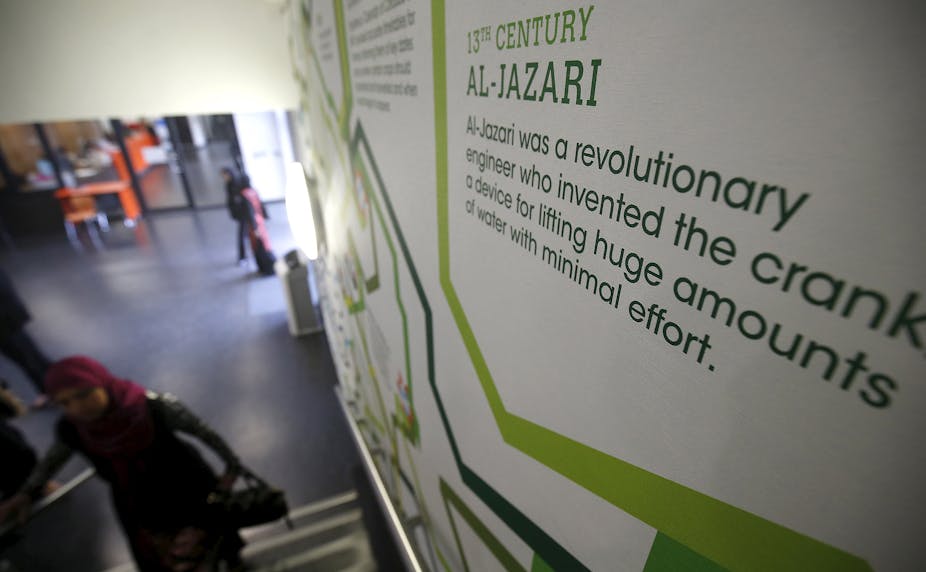The group responsible for a controversial “radicalisation awareness kit” for teachers is facing serious criticism from activists, teachers and academics.
The kit was created by the counter-terrorism minister, Michael Keenan, along with a team of experts. It sparked public ridicule for its use of fictional case studies.
One example included a university student called Karen who left home and became an environmental activist. She started listening to alternative music and ended up being arrested for sabotaging forestry machinery. The example, in the “Violent Extremism” section of the anti-radicalisation handbook, inspired the #freekaren hashtag as the public took to Twitter to mock the scenario.
The handbook resulted in The Daily Telegraph running a piece titled “Schoolyard Terror Blitz” – an indication of the panic about radicalisation in schools.
It’s clear that better structural measures are required. Racism, bullying, cultural and religious blindness, misogyny and economic inequality are key elements for interpreting various kinds of youth extremism. These factors are sometimes reinforced on an institutional level and contribute to further marginalisation and stigmatisation.
We need better ways of communicating how schools and universities should interpret and address the process leading to extremism, rather than just providing a checklist of behaviours.
We need to respect and engage with the diverse and fluid ways young people express themselves, rather than perpetuate and reinforce conservative or monocultural norms.
Time to rethink the curriculum
The scathing response by the president of the NSW Teachers’ Federation, Maurie Mulheron, reflects the need for more communication with teachers in approaching extremism in schools. A key solution may be in curriculum reform.
In order to engage marginalised and stigmatised young people it is important to instil respect and a sense of belonging. This involves transforming the themes and topics we teach, and reconsidering how we convey the information. A number of recent university movements present us with important models and new methods for tackling systemic bias and exclusion in all forms of education.
Academics and students involved in the Rhodes Must Fall and Open Stellenbosch campaigns in South Africa and the Why Is My Curriculum White? and Dismantling the Master’s House campaigns at University College London in the UK inspired a group at the University of Sydney to initiate discussions around the diversity of university courses.
The Why Is My Curriculum White? – Australasia campaign is designed to analyse the curriculum in Australia and New Zealand and the ways in which it replicates and reinforces the concept of whiteness.
The campaign aims to “decolonise” the subjects that shape the curriculum. It goes further by exposing and challenging other issues: teaching methods that assume culturally and socially specific forms of background knowledge and ability, and limit the participation of students from marginalised groups; classroom set-up that is non-inclusive and inhibits marginalised students; and exclusionary practices normalised in schools and universities.
It suggests that teachers can develop a curriculum that challenges whiteness by:
rethinking certain Eurocentric notions that are displayed as neutral and normal
reframing basic questions in the humanities that assume Eurocentric concepts
encouraging students to take initiative in finding and incorporating neglected thinkers and ideas in order to help dismantle the white curriculum.
Only by following these objectives will schools and universities help to eradicate discrimination, encourage intercultural respect and combat violent extremism.
We need to improve the discussion about the role of whiteness, coloniality (two interrelated concepts) and intersectional discrimination in the curriculum. An intersectional approach is critical because it recognises different forms of domination and marginalisation – such as racism, sexism, classism, historical injustice and prejudice based on religion – as inextricably linked.
Ignoring these issues is detrimental for both teachers and their students. It risks having an impact on student performance, complicating teacher-student relationships and clouding the ability to see and think beyond racial categories.
A learning environment that validates the identity and cultural background of marginalised groups is an achievable step in the right direction towards addressing extremism.

